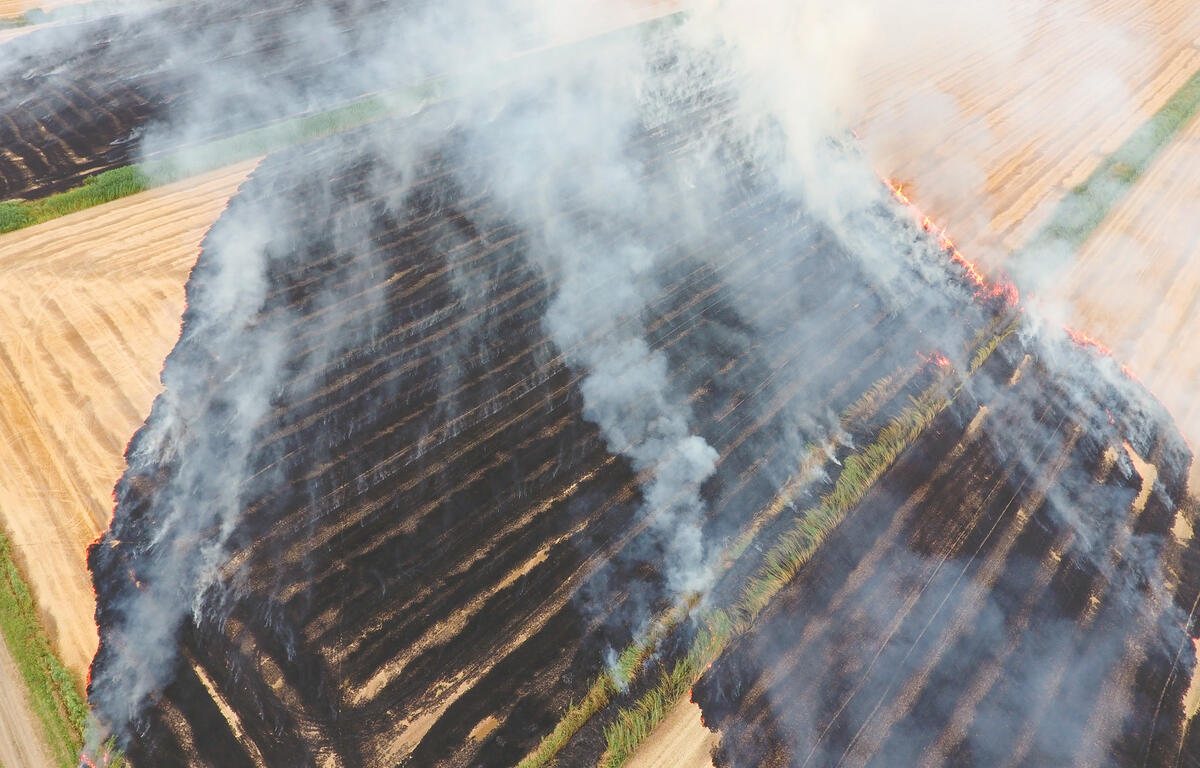Jonesboro, AR – (JonesboroRightNow.com) – Sept. 17, 2024 – Field burning in Arkansas remains a topic of fierce debate, as while farmers must burn, many nearby residents find it to be a nuisance and possible health issue.
According to Branon Thiesse, Craighead County Extension Agent and Staff Chair, field burning helps to remove the excess plant material that remains following harvest.
“This allows them to better prepare the field for fall tillage to get the field ready for planting in the spring,” Thiesse said. “The earlier we can get our seeds in the ground in the spring increases our chances for good yields as compared to planting later in the spring. It would take two to three trips to incorporate all that plant material into the soil at a very high cost per acre.”
He added that when fields are burned under proper weather conditions, effects of the smoke on the community are minimal. He said it’s when fields are burned under the wrong conditions that problems arise.
Arkansas State Representative Fran Cavenaugh said she plans to address this issue in the upcoming 2025 Arkansas Legislative Session. She is working with the Farm Bureau and the Rice Federation on legislation to help control when farmers can burn, with significant fines and penalties for improper burning.
While the Arkansas Department of Environment Quality can monitor agricultural burning, it has no enforcement powers. Additionally, while county sheriffs have some regulatory power relating to highway safety, burn bans do not apply to farmers. There are currently no fees, disincentives, or regulations on agricultural burning.
However, the Arkansas Department of Agriculture does have guidelines for field burning, with the “Voluntary Smoke Management Guidelines for Row Crop Burning” and additional information available at agriculture.arkansas.gov.
The guidebook includes a safe burning checklist, which suggests, taking extra precautions for smoke-sensitive areas and ensuring they are not threatened (highways, residents, communities, etc.); making official notifications to the Department Dispatch Center; checking to be sure relative humidity is above 20% and wind speed is less than 15 mph; and following appropriate Smoke Category Day Burning guidelines, which is a scale from 1 to 5 based on transport wind speed and mixing height (for smoke dispersal, 1 is poor and 5 is excellent).
“Unfortunately, some farmers don’t follow the guidelines, which causes problems,” Cavenaugh said. “There is a happy medium where farmers can burn, and people don’t suffer. We just have to find that solution.”
Craighead County Health Officer and Dean of the New York Institute of Technology College of Osteopathic Medicine at Arkansas State University Dr. Shane Speights also noted how complicated this issue is and how it could affect the community.
“When the air quality is worse, we do see an increase in upper respiratory symptoms and complaints,” he said, adding that other factors, such as dry conditions, heat, UV and even rain, contribute to these complaints.
There is an increase in emergency room and Urgent Care visits with those types of complaints as well, he said.
Dr. Warren Skaug, who has gone before Arkansas legislation twice to address the issue, noted their importance as guidelines for crop burning. Skaug and his wife are both retired pediatricians from The Children’s Clinic.
“It is a nuisance and aggravation for many healthy people, but for children and people with respiratory conditions, it can be a real issue,” he said.
During his last presentation, entitled “Agricultural Burning in NE Arkansas – the Medical Perspective,” Skaug concentrated on the air quality hazard of unrestricted agricultural burning.
In the presentation Skaug said Northeast Arkansas is a farm country, producing many different crops, including wheat, soybeans, cotton, corn, peanuts, and rice. Of more than 1 million acres of rice farmed in Arkansas, Craighead Co. produces approximately 70,000 acres. With such large quantities of the crop, burning is a viable management practice and by far the cheapest.
However, the agricultural smoke produced by crop burning contains carbon monoxide and other hazardous gases that contain particulate matter (PM) such as PM2.5 and PM10, which are air pollutants. When PM 2.5s enter the bloodstream, it increases the risk of blocking blood flow to heart muscles.
This results in area providers seeing an increase in asthma, bronchitis, sinusitis, worsening COPD, and other respiratory conditions during the burning season.
Studies also showed that high concentrations of these pollutants, while intermittent, can impact lung function and that the effect is more pronounced and longer lasting in children.
In March 2021, Asthma Magazine published an article entitled “Crop Burning and the Prevalence of Asthma and COPD Emergency Department Treatments in a Rural Arkansas County,” which compared fall emergency department visits for asthma and COPD for Craighead and Sebastian Counties from 2014-2016.
According to this study, there was a 21% increase in asthma and a 17% increase in COPD emergency department visits in Craighead Co., which coincided with statistically higher PM 2.5 levels in Craighead vs Sebastian Co.
In the presentation, Skaug said the ultimate goal was to reduce the significant health burden that now exists, which he felt could be accomplished through monitoring, research and regulation.
“The public health hazards of large-scale agricultural burning are very real and deserve our attention,” Skaug said. “I applaud any effort to produce draft legislation at the state level that provides mandatory guidelines for agricultural burns that will include potential penalties for noncompliance. Other states have successfully done so with measurable results and without an undue burden on farmers. I believe it is time for Arkansas to do the same. We owe it to the citizens of Northeast Arkansas.”


